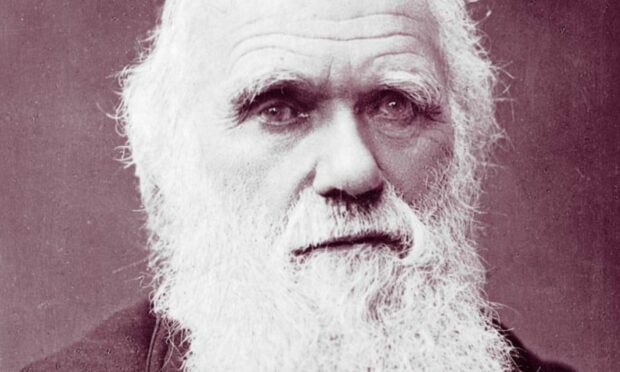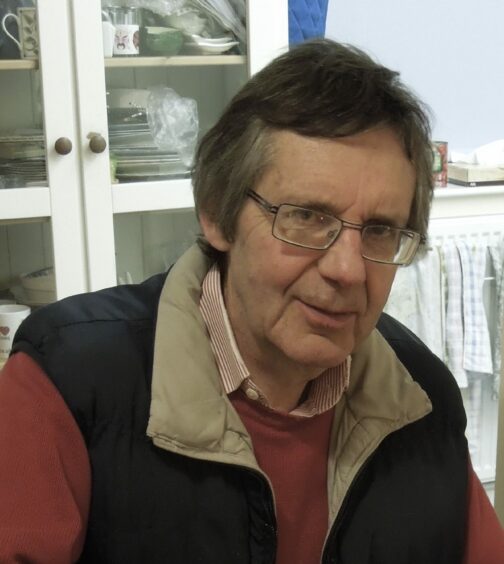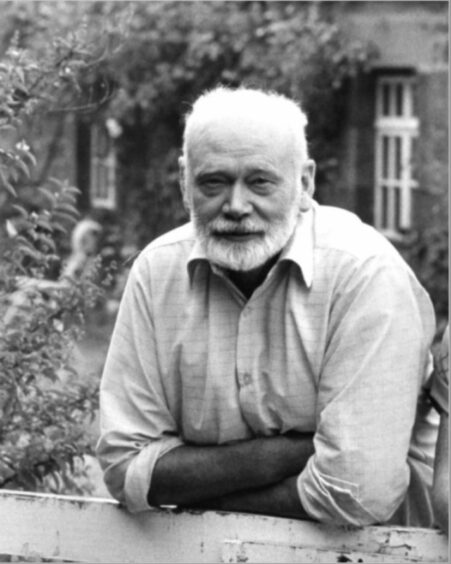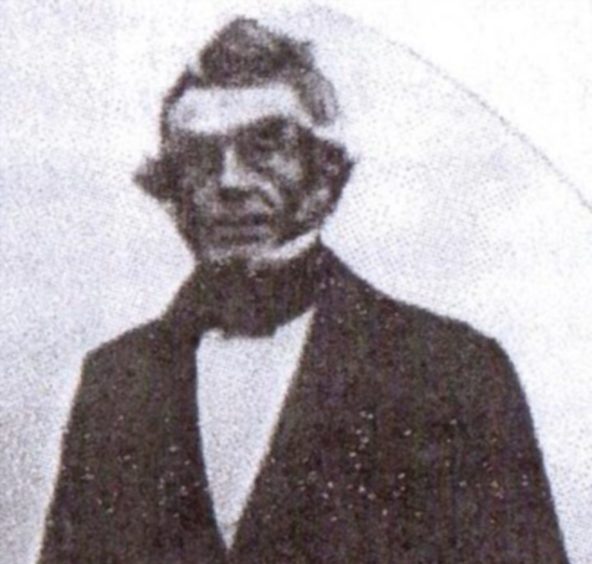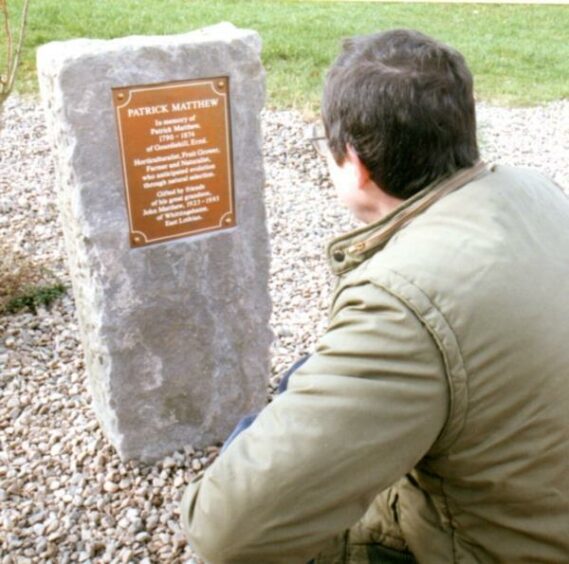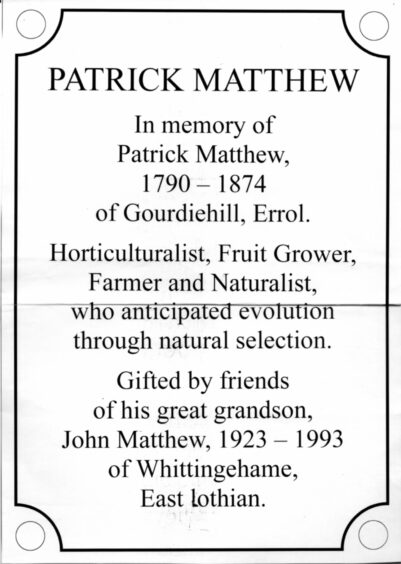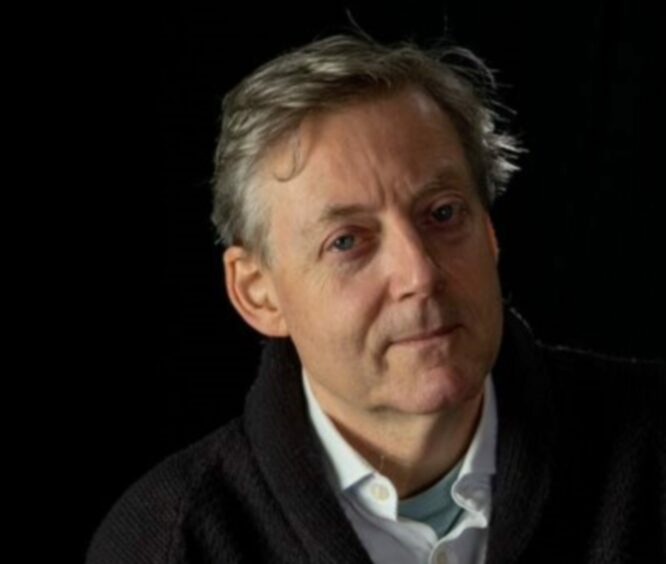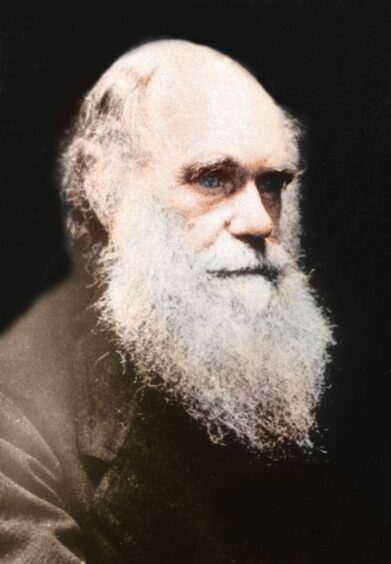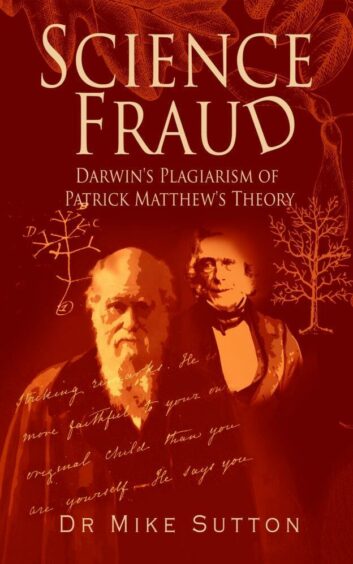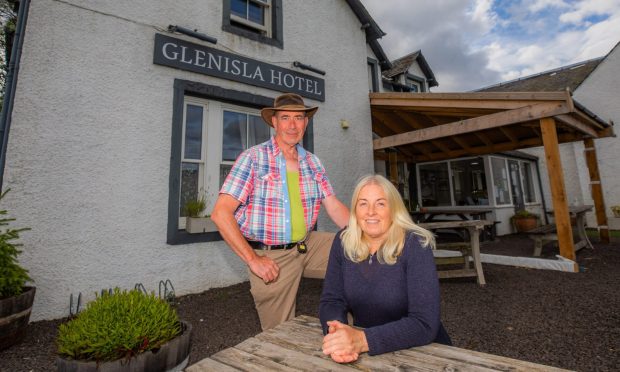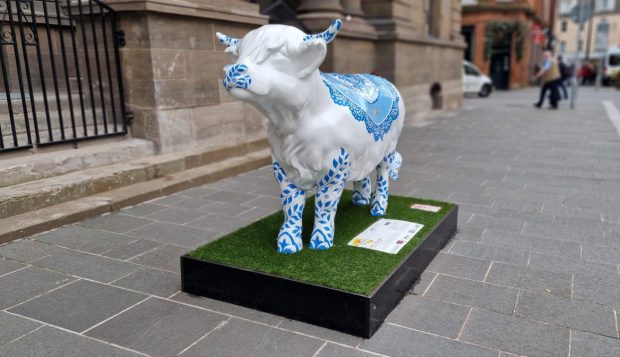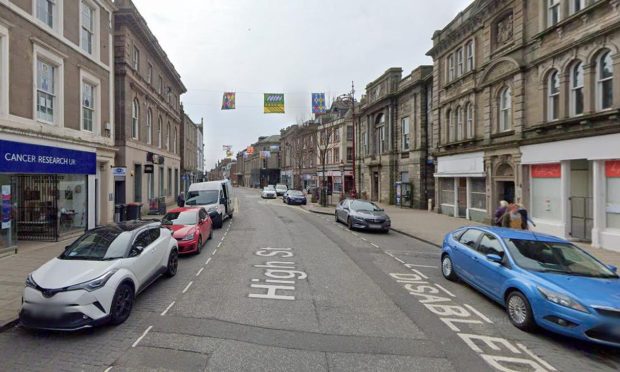Michael Alexander speaks to a retired Edinburgh biologist whose discovery of “lost” letters helped fuel debate about Charles Darwin and whether he “stole” his theory of evolution from a little-known Perthshire farmer.
Debate surrounding Charles Darwin and his role transforming the understanding of natural history heated up in February when a new book claimed to have found evidence that he stole his Theory of Evolution.
Criminologist Dr Mike Sutton argued that there are overwhelming similarities between Darwin’s seminal On The Origin Of Species and an earlier work by Perthshire naturalist Patrick Matthew.
Understanding of the natural world was revolutionised when Darwin explained that rather than being the result of divine creation, life developed from a common ancestor by gradual evolution.
Having observed creatures such as the giant Galapagos tortoise, Darwin published On The Origin Of Species in 1859, spelling out the theory of a ‘Process of Natural Selection’.
However, 28 years earlier Matthew had published On Naval Timber And Arboriculture, which included similar findings through his theory of the ‘Natural Process of Selection’.
‘Science fraud’ claims
In a February feature interview with The Courier, Dr Mike Sutton, whose book Science Fraud: Darwin’s Plagiarism Of Patrick Matthew’s Theory, was published in February, described Darwin’s legacy as the “biggest science fraud in history”.
He highlighted similarities between key phrases and explanations and cited letters apparently showing Darwin knew Matthew’s work and covered up his debt to his rival.
Now a Courier reader, who enjoyed the feature, has been in touch to highlight the “small role” he played in safeguarding the priceless Darwin/Matthew letters.
Edinburgh-based biologist Ian Hardie explained that Patrick Matthew was the great grandfather of a friend of his, John Matthew of The Old Mill, Whittingehame, East Lothian – now deceased.
He says it was a “bit of a shock” when he had to go through John Matthew’s personal effects, following his death, and found the priceless Darwin/Matthew letters amongst his belongings.
“Through mutual woodland interests I became good friends with John Matthew but sadly I only knew him for about seven years as he died just short of his 70th birthday in 1993,” explains Ian, who used to work for the Scottish National Blood Transfusion Service where he was business development manager.
“Before retirement he worked as an agricultural technician at a research institute.
“His innovation abilities across many areas always fascinated me.
“He often spoke of his family roots around Newburgh on the Tay, mentioning his great grandfather.
“But little did I realise at the time his historical importance.”
Great friendship
Ian and his wife got to know John Matthew when they bought a small cottage near the village of Garvald, Gifford.
They bought a woodland which adjoined John’s property.
They became “great friends” and planted around 900 trees on the land.
Ian helped John chop down dead elms which were then chopped up and John used them to run his heating.
When John died suddenly from an aneurism, however, and with John having no surviving relatives in Scotland, he unexpectedly found himself as joint executor of his estate with another friend of his, the late Min Hunter.
“Being an executor I had to sift through John’s personal papers and, amazingly, found two original letters of correspondence from Charles Darwin to Patrick Matthew,” he says.
“One dated 13th June 1862 is particularly notable as Charles Darwin addresses Patrick Matthew as “the first enunciator of the theory of Natural Selection”.
“There is a further letter to Patrick Matthew dated November 21 1863 which clearly reinforces Darwin’s admission that Patrick Matthew got there first.
“It is written on his behalf by his wife Emma.
“In this letter she says: “He (Charles Darwin) is more faithful to your original child than you are yourself”.
Kept in Scotland
As a scientist and biologist, Ian immediately recognised the importance of the letters.
However, Ian admits that at the time of John Matthew’s death, he’d never heard of Patrick Matthew, other than the indirect mention by John about a family connection.
Ian understands that Cambridge University was very keen to add the priceless letters to their Darwin collection of correspondences.
Ian and fellow executor Min took the view, however, that their rightful place was in Scotland.
The letters were subsequently donated to the National Library of Scotland.
Ian says that to see and feel the letters signed off by Charles Darwin was “amazing”.
He and Min used part of the John Matthew estate to fund a Patrick Matthew plaque at Gourdiehill, Errol, where Patrick Matthew’s long since demolished mansion house once stood.
Having now thoroughly read Mike Sutton’s book, however, he fully appreciates the incredible significance of the letters and says it’s “almost inconceivable” that Darwin and his close-knit group of colleagues did not know about Patrick Matthew’s work.
It can’t be proven, he admits, but in a civil court, Ian thinks a jury would say it’s beyond reasonable doubt that Darwin did know about Matthew and “covered it up”.
“I would argue this is one more example of Scottish Enlightenment development, Scottish ideas or whatever, being ‘suppressed’ by the English establishment,” he says.
“A friend of mine managed to get Nan Shepherd on a five pound Scottish note.”
Nan Shepherd was a Scottish Modernist writer and poet, best known for her seminal mountain memoir, The Living Mountain, based on experiences of hill walking in the Cairngorms.
“It would be wonderful to get Patrick Matthew on one of the Scottish notes too,” he says, adding that he has been “seriously inspired” by Mike Sutton.
Work of Dr Mike Sutton
The Courier told previously how Mike Sutton used text-mining software to first claim in a 2014 e-book that Charles Darwin and Alfred Wallace plagiarised the theory of natural selection from the work of Patrick Matthew.
Challenging the orthodox view that Darwin was the first to discover the process of natural selection, the criminologist revealed how he had uncovered evidence that Darwin, who always denied plagiarism, must not only have been aware of Matthew’s work from 1831, but borrowed heavily from it.
A number of Darwinist academics challenged Dr Sutton’s findings, with one accusing Dr Sutton of “very poor and lazy research offset by a big aggressive ego”.
A botanist, meanwhile, suggested it was “absurd” to regard Matthew as a “hard done by Scottish hero”.
Using “Big Data” research, however, Mike Sutton has presented new evidence that at least 30 people cited Matthew’s work in published literature before 1858, and that several were known influencers of Darwin’s and Wallace’s work in the field, including naturalists Loudon, Selby and Chambers.
Patrick Matthew, in 1831, originated the complete theory of evolution by natural selection in his book On Naval Timber and Arboriculture, and did so before Charles Darwin and Alfred Wallace claimed to independently replicate it in 1858, says Dr Sutton.
However, “unjustly, and against the Arago convention on priority” – a ruling that gives origination of any science theory to the first to publish – Mike Sutton argues that Matthew has been “illicitly denied his priority” on the grounds he never influenced anyone with his breakthrough.
“The three letters from the Darwins to Matthew are important in their own right as evidence that both Charles Darwin and his wife Emma Darwin knew and fully admitted that the theory of evolution by natural selection was Matthew’s prior published theory,” he says.
“We could speculate beyond that as to why they admitted more in these letters than Darwin begrudgingly admitted to in print, but I have always steered away from speculation in this story so as not to give rusty ammunition to those seeking to have the new found empirical facts re-buried.
“The one thing all scientists agree on is that the main rule of science is that it has to based on agreed facts.
“Once the existence of facts – empirical data – is agreed the usual way forward is discussion and agreement v disagreement about what those facts actually mean.”
‘Empirical evidence’
On this basis, Mike says it can safely be said that these are genuine letters from the Darwins.
They are empirical evidence of what Darwin wrote to Matthew about the theory being Matthew’s while Emma Darwin essentially implies that her husband had “kidnapped” Matthew’s theory (she called it his child) and then took more care to nurture it than Matthew had.
Mike adds: “On 13 June 1862 Darwin wrote a letter of reply to Matthew’s initiating letter: Dear Sir, I presume that I have the pleasure of addressing the author of the work on Naval Architecture and the first annunciator of the theory of Natural Selection.”
Here, says Mike, Charles Darwin admitted the theory is Matthew’s because Matthew got there first. Under the Arago ruling on priority that means Matthew has priority over Darwin for it.
On November 21 1863 Emma Darwin wrote a letter to Matthew which included: “Mr Darwin begs me to thank you warmly for your letter, which has interested him very much. I am sorry to say that he is so unwell as not to be able to write himself.
“With regard to Natural Selection, he says that he is not staggered by your striking remarks. He is more faithful to your own original child than you are yourself.”
Mike describes the words of Charles and Emma Darwin as “empirical data”.
He says: “I cannot stress the importance of that fact enough, given the amount of lies, misrepresentation and fact denial propaganda currently being put out by the “Darwin Industry” on the subject of Patrick Matthew and Darwin.
“It is a fact that the Darwins wrote them. And facts are what real, as opposed to pseudo-science or fake revisionist history is based upon.
“As Abraham Lincoln once said, “If it never happened it’s not history.”
Mike says it’s known these letters did “happen” and so the words of Charles and of Emma are history.
But these three priceless letters with their most telling admissions are only a very small though significant amount of the data that exist on Darwin’s “plagiarism and lies” when it comes to Patrick Matthew’s prior published theory, he says.
‘Myths’ about Darwin?
“Is it true that Darwin and/or Wallace originated the full theory of macroevolution by natural selection? The answer is no,” says Mike.
“It’s a myth because Charles Darwin and Alfred Wallace, and many other top experts on evolution (such as Matthew himself, de Beer, Mayr and Dawkins) all agreed Matthew (1831) was first into print, decades before Darwin or Wallace with the full theory.
“Is it true that Matthew must have failed to influence Darwin and/or Wallace with his theory because no naturalists/no single person had read Matthew’s theory before he claimed his priority in a published letter of 1860?
“No! It’s a myth started as an empirical proven lie by Darwin in all editions of the Origin of Species from third edition onwards and parroted by the credulous and adoring scientific community ever since.
“Is it true, what Darwin claimed in the Origin of Species and elsewhere, that Matthew was an obscure writer and that Matthew’s theory was only briefly given in the scattered pages of an appendix to an entirely irrelevant book on the topic?
“No. It’s a myth. Again this myth was started as a published lie by Darwin. Firstly, if Matthew was an obscure writer then how is it that pre-1858 Matthew was cited in the Encyclopedia Britannica and elsewhere in that publication his 1831 book enjoyed a prominent 1/2 page block advert and why is it that it is newly proven that before 1858 Darwin held in his own hands at least five publications that cited Matthew’s 1831 book?
“Is it true that Darwin originated the term “process of natural selection”
“The answer is something in between. Big Data research does reveal he was apparently first into print with that term.
“But it is a four word shuffle of Matthew’s 1831 original term of the very exact same meaning “natural process of selection”.
“And Chambers (who cited Matthew’s 1831 book before writing his own influential 1844 book on organic evolution) was apparently first to be second into print in 1859 with Matthew’s original four word term.
“Is it true that Darwin was the first to use artificial selection as an analogue of natural selection as an analogical explanation to explain the process of natural selection?
“No. It’s a myth. Matthew was first to do that. He was then followed by Wallace who used it in his Sarawak paper. Darwin replicated Matthew’s explanatory analogy in his private essay of 1844 and to open Chapter One in the Origin of Species.
“In that private essay Darwin even replicated Matthew’s highly idiosyncratic analogy of difference between trees raised in nurseries versus trees growing wild in nature.
“Is it true that Darwin was a remarkably honest man and genius original thinker?
“No. It’s a myth, proven by each and every one of the empirical fact led five answers to the questions above.
“Darwin (and Wallace too) was a replicator of a prior published theory and all paths of those who read and cited Matthew’s book lead to Darwin and to Wallace and to their known and admitted influencers, friends and to their influencer’s influencers.
“Darwin, with assistance from Wallace, and others, facilitated and enabled by the bone-headed bias and credulity of the scientific community, committed the world’s greatest science fraud by plagiary and lies.
